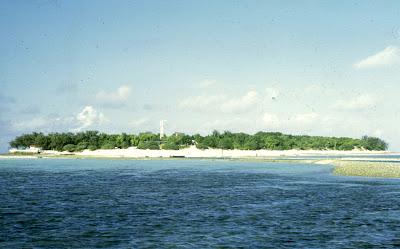
Heron Island lies fifty miles east of the city of Gladstone in Queensland. Part of the island is the Heron Island Resort; the other houses a scientific research institute.
If you could choose to be stranded on a desert island, what would you look for? A source of shelter? A ready supply of food? The white-capped noddy tern, a sea-going bird that lives on Australia’s Great Barrier Reef, needs just such an island for nesting, and Heron Island fills the bill. Hundreds of noddy terns breed on Heron Island, located almost exactly on the Tropic of Capricorn off the Queensland coast.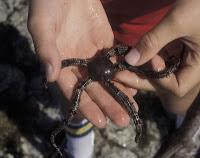
Brittle Star
Thirty years ago, in August 1983 (winter in the southern hemisphere) our family visited Heron Island and saw noddy terns, herons, and a host of other fascinating wildlife. It is one of our most memorable vacations. During our stay we walked the island and watched the birds, explored the reef at low tide, snorkeled at high tide, observed sea turtles and deep water fish from a glass bottomed boat, and enjoyed the amenities of the resort. Art’s hundreds of photos from this trip inspired my book A Walk on the Great Barrier Reef.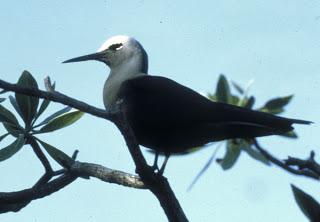
Noddy Tern
Unlike most of the other small coral islands of the Great Barrier Reef, which are rocky and barren, Heron Island is covered with lush vegetation, including pandanus palms and pinsonia trees, which make ideal nest sites protected from the weather and predators. Huge flocks of noddy terns make virtual apartment houses out of the trees. Each pair of birds claims one horizontal branch where they build their nest with seaweed and leaves.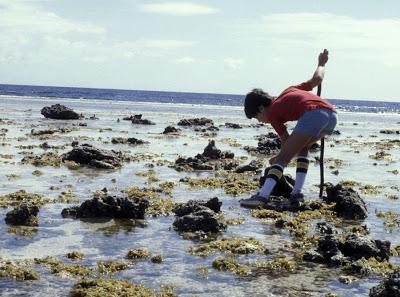
The Great Barrier Reef stretches for 1250 miles along the northeast coast of Australia. It is an undersea wilderness of coral, colorful fish, and thousands of unusual sea creatures–some of which are poisonous, and all fascinating. At low tide, the top of the reef is revealed. To protect the reef and its wildlife, the Australian government declared it a national park in 1979.
Like other reef islands, Heron Island is surrounded by a large “reef flat” which extends nearly a quarter of a mile into the sea. Fish and sea animals that live on and around the surrounding reef provide food for both migrating and nesting birds.Where the reef flat drops off, the water is about thirty feet deep, and there, from a boat or with diving gear, you can see large formations of coral and groups of colored fish. But at low tide the water on the flat itself is only a few inches deep and in many places the coral rises above the water. Wearing canvas shoes as protection against sharp pieces of coral, and carrying a stick for balance, we went out each day to discover the wonders of the reef for ourselves.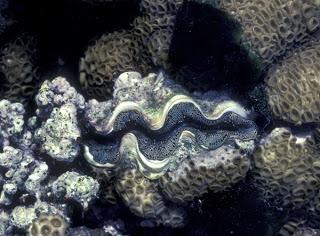
Giant clam embedded in brain coral
Despite its plant-like forms, coral is actually clusters of tiny animals that live inside hard calcium skeletons. Live coral varies in color from purple, green and yellow to bright red. When coral dies, it loses its color, revealing its brilliant white skeleton.The ideal temperature for coral growth is 75-85 degrees Fahrenheit. As the oceans grow warmer with climate change, many corals are dying and reefs are being destroyed.
The Great Barrier Reef is one of the most wondrous places on earth. Our visit to Heron Island was a chance to spend a few days immersed in its beauty and richness.
